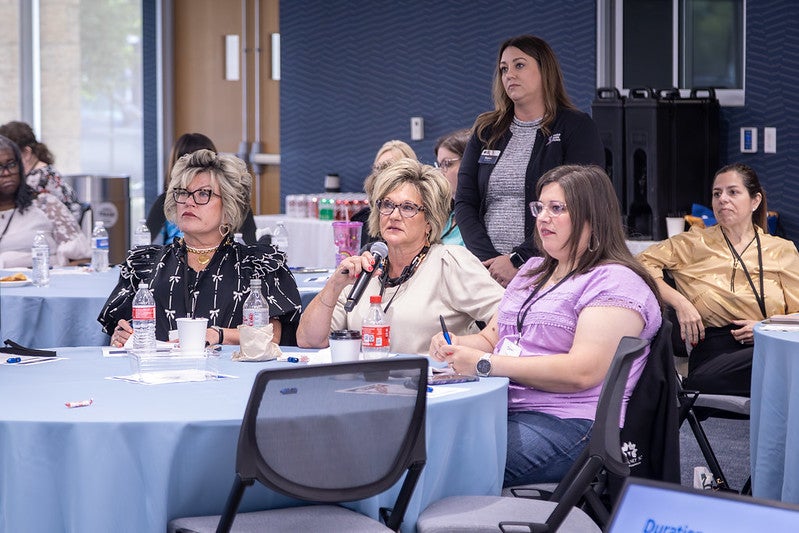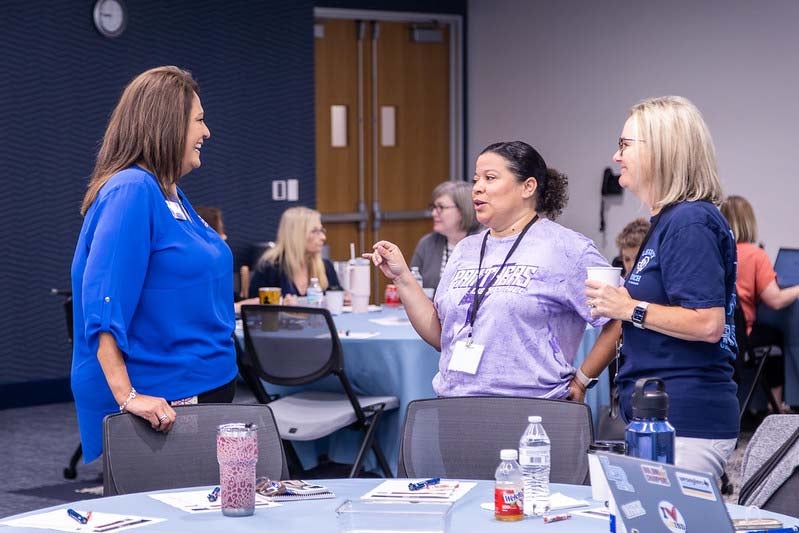School Risk Manager Q&A: The Why and How of Return-to-Work

Christina Ford from Killen ISD, Robin Lichtner from Leander ISD, and Charleane St. John Edmond from Spring Branch ISD shared their experiences during the risk manager panel discussion.
Why Return-to-Work?
Workplace injuries cost employers $176.5 billion and 103 billion lost workdays in 2023, according to the National Safety Council. In the education/health industries, the Texas Department of Insurance found injured employees are away from work for 28 days on average.
A return-to-work (RTW) program is a proven tool for controlling the costs that come with injuries. During the Workers' Compensation 201 Summit, risk managers representing three Fund members shared tips for making RTW work in schools.
Level Set
Some injured employees can't immediately perform their normal job duties. A return-to-work program helps them come back to the team safely while they heal, either with changes to their regular job or in a temporary, alternate work assignment.
Key Terms
Bona fide offer of employment: Employer's letter offering modified or alternate work to an employee within his/her medical restrictions. Bona fide offers must meet the requirements in 28 Texas Administrative Code § 129.6
DWC Form-73: Details the injured employee's medical restrictions, per the doctor

Royal ISD's Kenesha Carter (right), HR Specialist; and Brenda Saldana, HR/Payroll Coordinator, recently assumed responsibility for the district’s workers’ compensation claims. After learning the basics, they were ready to dig deeper at the Workers' Compensation 201 Summit.
DWC Form-74: Provides a standard format for employers to explain the injured employee’s normal job duties to the doctor
Modified duty: Work that complies with an injured employee’s restrictions as designated by their doctor on DWC Form-73.
RTW Foundation
Where should districts start if they don't have an RTW program?
Christina: You have to start with administrative buy-in and support. From there, write a statement that clearly explains the district’s commitment to helping injured employees return to work safely and cost-effectively. The RTW guide on the Fund website is a great resource that walks you through building a program.
What concerns do employees express about RTW, and how do you address them?
Robin: Employees don't want to reinjure themselves. They have to trust you're there to support them, guide them, and promote their well-being. We try to create a family culture where everyone feels comfortable voicing concerns.

Elizabeth Jackson, New Caney ISD Benefits and Risk Manager (middle), was instrumental in launching the district’s workers’ compensation program. She was joined by co-workers Marsha Stuard, Risk Management Specialist; and Carmen Trevino, Benefits Specialist.
Health care providers are critical to the RTW process. How do you build those relationships?
Charleane: We meet with clinics, explain our RTW program, review our protocols, and set expectations. We provide them with pre-completed, functional job descriptions, like a DWC-74. The longer you work with providers, the better they understand the physical demands of each position.
Modified Duty/Bona Fide Offers
What's the key to a strong modified-duty or alternative work assignment?
Charleane: The assignment has to comply with the employee's work restrictions on the DWC-73. It also has to be productive. We don’t assign "busy work."
What are common modified-duty roles in your district?
Christina: We modify the employee's role, when possible, but some modified-duty assignments have been useful. Our police department created an administrative role for injured employees. Student nutrition has injured employees collecting overdue accounts, and our facilities department always needs data entry.
Will you share an innovative example of modified duty?
Robin: We have a consistent demand for science department kits. Injured employees who can complete assembly-style work are temporarily assigned to help. There are typically one to two positions, and assignments last no longer than 30 days. Some employees are hesitant, but they often end up loving it and they don’t want to leave.

Liberty Hill's Zoed Rodriguez (center), HR Specialist; and Lisa Garner, Benefits Coordinator, caught up with TASB Risk Management Services Claims Manager Connie Castilleja.
What’s the most effective way to deliver bona fide offers of employment?
Charleane: Our campus personnel deliver offers on my behalf. That way, it comes from someone they see or interact with regularly. We send offers via multiple channels.
Final Thoughts
What is one actionable recommendation or mindset shift for districts looking to strengthen their workers’ compensation programs?
Charleane/Christina: One of the most important things you can do is understand how every school board policy and administrative procedure intersects with your responsibilities. You also want to make sure you’re in the loop when policies are updated.
Robin: Enjoy your job. Bring passion to your work. Getting someone well and back to the team is joyful. When you’re passionate, employees adopt your mindset. I wish everyone loved their job as much as I do!
Risk Solutions Staff
The TASB risk solutions team includes risk solutions consultants and communications professionals who deliver training, consultations, articles, and resources that help Fund members control losses and their associated costs.
You May Also Like…
View All Related Insights
Fund Coverage 101: Intro to Cybersecurity Claims
Cybercrime is big business, and schools are tempting targets. Fund Privacy and Information Security coverage pays for covered claims, including incident response when appropriate.

Fund Coverage 101: Intro to Liability Claims
Our claim professionals help Fund members navigate the intricacies of general and professional liability claims.

TASB Risk Management Fund Prevails in Property Claim Lawsuit
The TASB Risk Management Fund won a unanimous jury verdict in Coleman County against a property claim lawsuit brought by a West Central Texas school district.

Fund 101: Strength Through Collaboration
What is risk pooling and what does it offer? The Fund focuses on long-term, stable pricing while offering Workers’ Compensation, Property, Liability, Auto, and Unemployment Compensation coverage.
